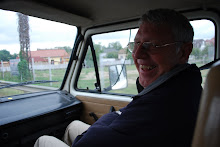Marxist theology holds that urban areas are economically, socially, and culturally superior; forty years of communist rule in Romania marked fundamental economic, social, and cultural shifts reflective of this overarching ideology.
One of the greatest shifts occurred through the breakdown of rural life. The communist regime focused its interest on industrialization, especially during the Ceausescu era (1965-1989), and agricultural production was largely underfunded. But even farms were organized to profit the communist economic machine as the state forced collectivization of farms throughout Romania; by the 1980s, eighty percent of Romania’s farms were owned by the state and organized as collectives. Collective farmers received wages, a portion of the profit, and some farm products, but were no longer landowners. This program of forced collectivization was intended the boost agricultural production, but in reality, it led to sweeping drought and famine and a dwindling, disenchanted rural labor population.
As conditions worsened in rural areas, the disparity between rural and urban life widened into a gaping chasm; parents urged their children to seek educational and vocational opportunities in the cities, and many young adults joined the great tide of people flooding into city centers. The rural population shriveled quickly during this rural-urban migration, and rural populations were soon comprised of mainly women, children, and the elderly. (This was evident to our group as we bumped along through the Romanian villages; we saw mostly women and elderly people.)
With the flood of people headed for the city, the government started looking for a way to ease this great strain on cities; the regime was also looking for further opportunities to extend the machine of industrialization into rural areas in Romania. Through a program of systematization, Nicolae Ceausescu tried to stem the overwhelming tide of people migrating to the cities and to aid the machine of communist industrialization in Romania. Ceausescu poured money and resources into 550 Romanian villages, carefully selected for their industrial potential; these villages underwent a large-scale upheaval that transformed housing and education and implemented new industries to fuel the communist regime. Efforts for modernization and industrialization were concentrated in these areas while over 3,000 other villages were labeled “nonviable” and were gradually phased out or forcibly dissolved to make way for industrialization.
Great changes in village life threatened rural communities, and those who moved to the cities were completely estranged from their roots, cut off from any home or church community that formerly defined their identity. In order to remove nongovernmental spheres of influence and to extend social and ideological control over the Romanian people, the communist regime took public education out of the religious sphere and also demolished many churches. The destruction of so many churches and villages severed many people’s cultural and historical bonds and threatened the solidarity of their communities.
(Leah, Bethany, Rachelle)
Subscribe to:
Post Comments (Atom)

No comments:
Post a Comment